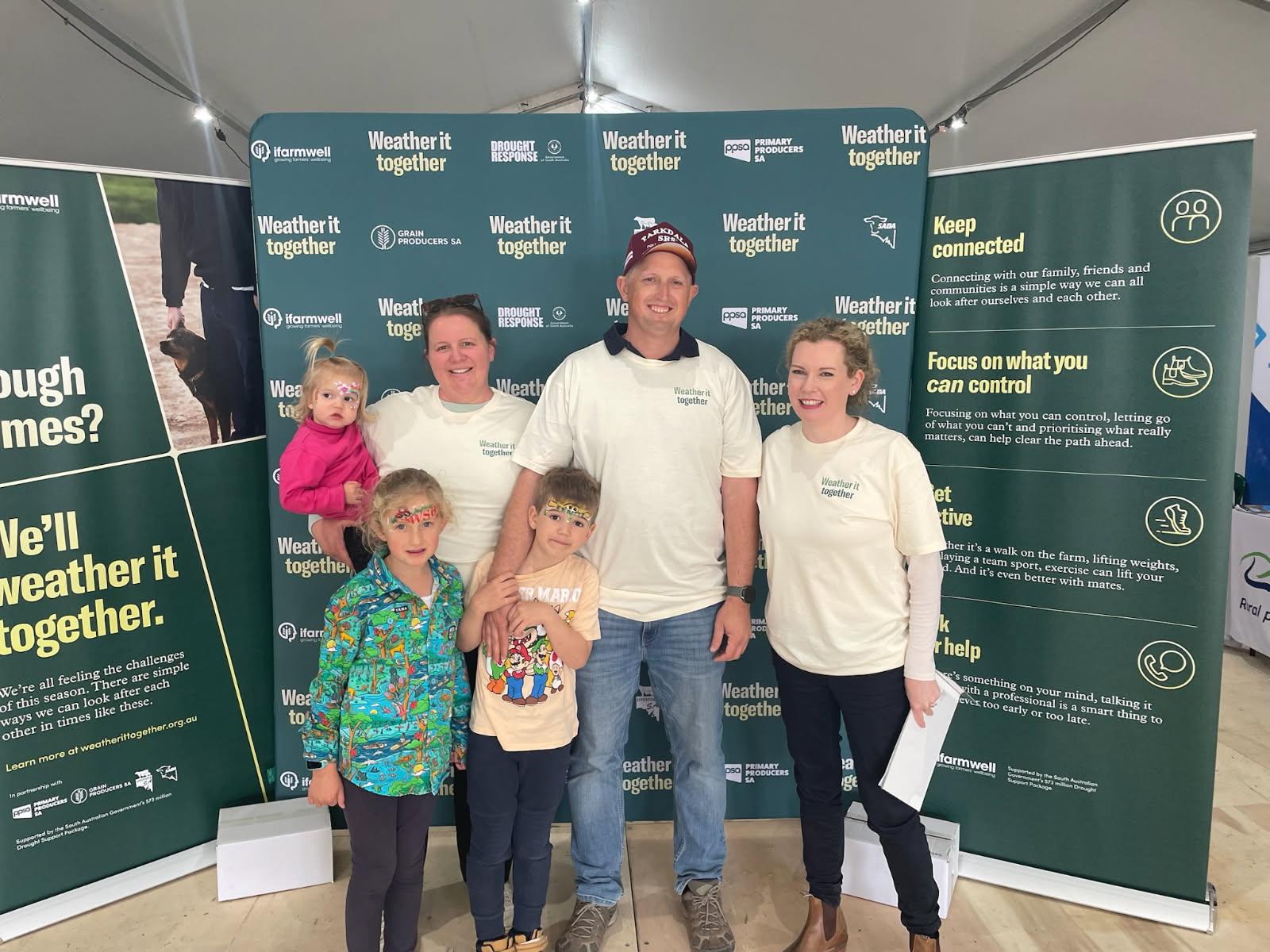SA farmers get new help after ‘worst’ season ever
Winter rainfall is failing to deliver many parts of the state a reprieve with latest data showing August hit record lows.

Primary Industries and Regions department executive director Jo Collins said at a press conference today at Yorke Peninsula Field Days that, despite recent winter rains, many farmers across the state were still struggling after prolonged drought decimated their businesses.
Today, the state government launched a new farmer-led project to tackle concerns over mental health as drought continues to take its toll.
“This really important initiative comes at a time when farmers are facing some of the toughest conditions ever experienced, with many regions enduring their lowest rainfall on record, and whilst we’ve had some welcome rain, we know that’s not been right across the state, and there are still plenty of people who are still doing it incredibly tough,” she said.
“It’s a real reminder that our mental health and well-being are just as important as our physical and financial well-being as well.”
Latest data from the Australian Bureau of Meteorology found winter rainfall in north eastern and southern South Australia was in the lowest 30 per cent of Augusts since 1900.
The Weather it Together initiative was launched as part of the government’s $73 million Drought Support Package, which includes $17.3 million towards future drought preparedness and resilience programs and $2.5 million for on-the-ground mental health resources.
According to the State Government, the initiative would encourage farmers to “keep connected”, “focus on what you can control”, “get active” and “ask for help”.
You might like
The campaign will initially appear on regional TV, radio, print and online channels and will later spread to clubs and pubs, GP clinics, service stations and regional community hubs.
University of South Australia associate professor Kate Gunn, who is the founder and director of ifarmwell, said that “while rainfall has improved conditions in some parts of the state, many farming families are still facing challenging conditions and full recovery is going to take some time”.
“Research from previous droughts has actually shown that the emotional impact of drought often peaks after the worst of the dry has passed, so this campaign will remain relevant and important for some time,” she said.
Caltowie-based mixed farmer Ben Lehmann, who is involved in mental health campaigning, said farmers experienced one of their worst seasons ever after one of the best seasons in 2022.
“Two weeks ago, we were probably feeling pretty good, and now you’re getting nervous again as that warm north wind comes for spring,” he said.
“You get sick of looking at the beautiful weather and blue skies in Sydney or somewhere, and it’s like, ‘Well, we just need a bit of that’.
“I think it’s fingers crossed we’re going to get a good hay cut and things are coming out ahead, and it’s looking really good, and the sheep job’s really improving. So yes, just trying to look forward and be ready to take those opportunities.”

Stay informed, daily
Primary Industries and Regional Development Minister Clare Scriven said the campaign would offer practical support and is “also about reminding farmers and their families that it’s okay to reach out, to talk, and to share the load”.
“We want farmers to know they are not alone — the State Government is committed to standing alongside them in the tough times, through programs like the Drought Mental Health Support Package and new initiatives such as Weather it Together,” she said.
Grain Producers SA chief executive Brad Perry said that South Australia has had more rainfall this year than last year, but that areas such as the Murray Mallee and Riverland have struggled to grow any crops at all.
“From driving across the state at the moment, the southeast probably looks the best in the state,” he said.
“I think the challenge with most of the areas as well – they look quite green and crops are growing well – is that there’s not a lot of subsoil moisture, so we can’t afford any sort of hot windy days from here on end, or that’s really going to impact the final crop.”
Perry said the season was about four to six weeks behind in most areas.
“We’re going to be facing a late harvest, and that means the final part of the growing season will push into some potentially hot weather in October and parts of November,” he said.
“We’re hoping that we don’t get too many days over 30, 35 degrees and that the wind also stays away, as well, and we also need some rain.”
Asked if the drought has dropped off the radar of people in Adelaide, Perry said Grain Producers SA was working hard to make sure the message is heard by city folk.
“I think the challenge is that people are impacted directly by the algal bloom and other natural disasters that are happening, and so the spotlight has sadly not been on the drought as much as we’d like it to,” he said.
The new campaign, which was developed by the University of South Australia’s ifarmwell team in partnership with Primary Producers SA, Grain Producers SA, Livestock SA and SA Dairyfarmers’ Association, will feature stories of farmers and practical advice.
In response to today’s announcement, shadow Primary Industries Minister Nicola Centofanti said, “[t]his is nothing new and continues to completely miss the mark of what’s actually needed”.
“The Opposition, farmers and industry have been calling for no and low-interest concessional loans for months now – a hand up, not a hand out,” she said.
“Yet the Minister continues to ignore these calls and instead recycles old announcements to make it look like they are doing something.
“It’s more spin than substance, and farmers deserve better than political window-dressing when they are crying out for real, practical support.”








